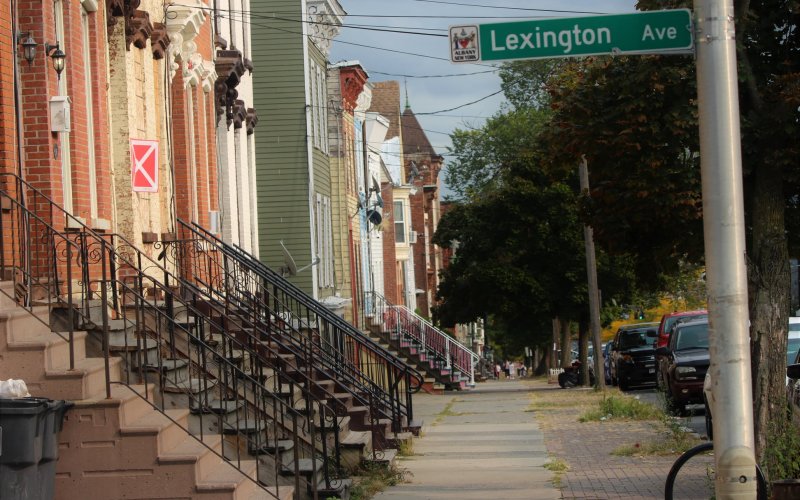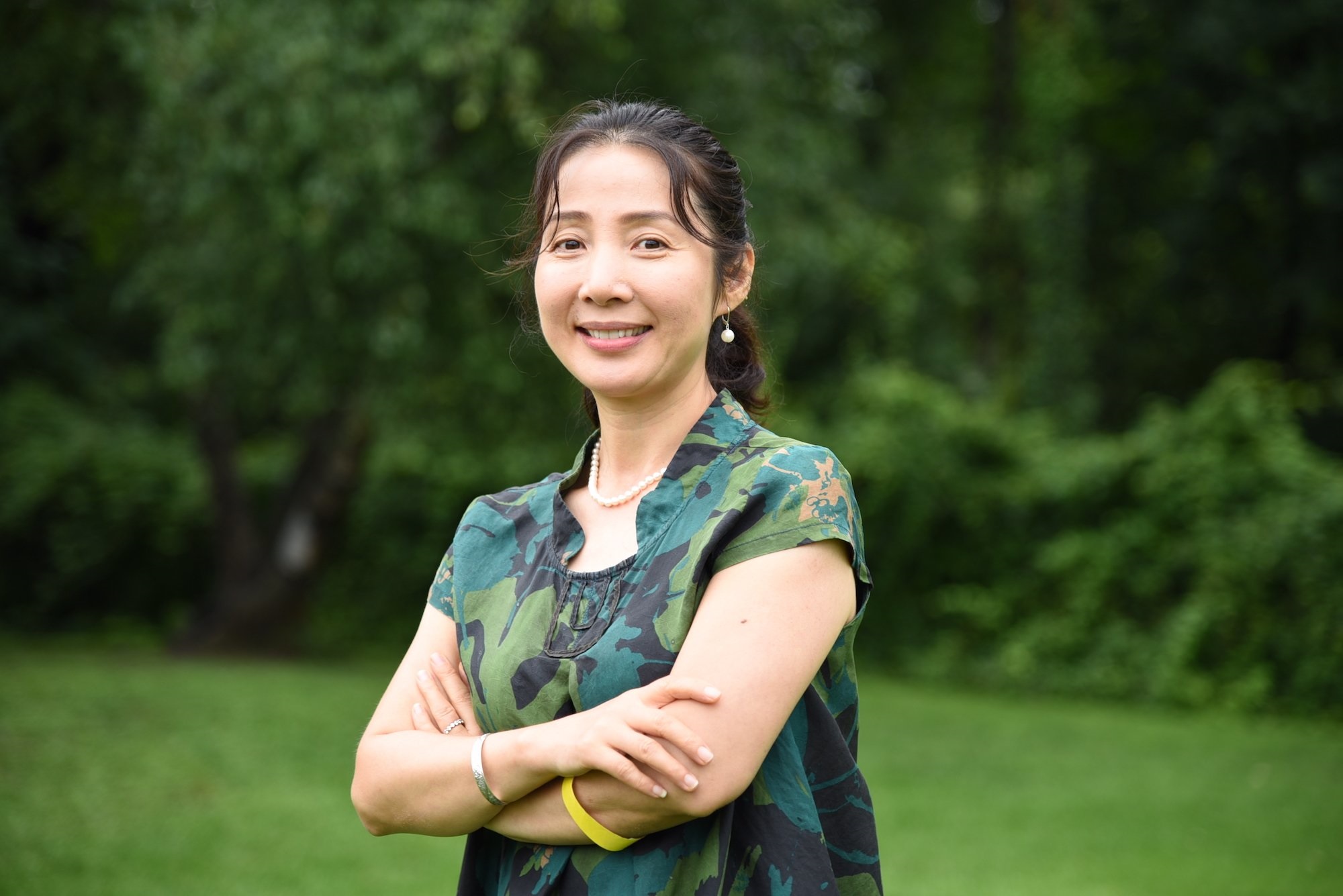New York’s Racial Homeownership Gap: A Q&A with Youqin Huang

By Mike Nolan
ALBANY, N.Y. (Nov. 16, 2023) — A new report released by the New York State Attorney General’s Office found a wide disparity in homeownership across New York among racial groups, with ownership rates among white residents more than double those of Black and Latino residents.
The disparity is especially prevalent locally. The city of Albany has the second-highest gap of any city in the nation between white and Black families who own homes. The report found that about 69 percent of the city’s white households live in a residence they own, compared to just over 20 percent of Black households.
Youqin Huang, chair and professor in the Department of Geography and Planning in UAlbany's College of Arts and Sciences, researches the impact of government policies and major socioeconomic transformations on people and places. She is a leading scholar on homeownership and housing inequality, with a regional focus on China.
We caught up with Huang to learn more about her research and how the housing inequalities in Chinese cities relate to New York’s gaps in homeownership.
Why is China a good place to study changes in urban housing equality?
I have been studying housing in China since the late 1990s, when China started to reform its housing away from the socialist welfare-oriented system. In the second half of the 20th century, China had a predominantly public housing system, where basically everyone in cities rented public housing from the government and employers. While housing was affordable and housing inequality was minimal, conditions were poor with severe crowding and shortage. Urban residents were largely not allowed to own homes.
Since the late 1990s, the Chinese government has been privatizing existing public housing stock and encouraging developers to build private housing, creating a housing market. However, as the housing market developed, previous socialist institutions and heavy housing subsidies by employers continued. Thus, housing consumption in China is shaped by both market forces and socialist institutions. This coexistence of dual mechanisms and the profound transformation in the housing system have created a unique context to study how people respond to government policies, and what the impacts are.
How do the homeownership disparities in China compare to the United States?
China now is a country of homeowners, with more than 90% of households owning homes (87% in urban and 96% in rural China), compared to about 65% in the U.S. One of the key reasons for the high percentage is that many households purchased public rental housing they lived in at heavily subsidized prices in the early years of the reform. Another reason is that many large public employers, such as government agencies, state-owned enterprises, and universities, continue to provide subsidized housing to their employees. In addition, more than 20% of households own two or more units, much higher than most developed nations.

The homeownership disparities in Chinese cities mainly lie between urban households, who have the local registration, and domestic migrants who do not have urban registration. Migrants in Chinese cities, many of them from rural villages, have long been treated as “outsiders” in Chinese cities and largely denied urban welfare benefits, including subsidized housing. Despite decades of reforms, migrants continue to be marginalized and are often not eligible for subsidized housing. They also suffer discrimination in the commercial mortgage system and often pay higher interest rates. Due to these discriminatory practices and their low incomes, their homeownership rate is very low (about 20%). This homeownership disparity between migrants and urban residents in China is very similar to racial disparities between Black and White families in the U.S.
Why do you think the City of Albany has such a high gap between white and Black homeownership? What can be done to help close it?
Albany is one of the oldest cities in the U.S., which brings baggage. After WWI, there was an influx of Blacks from the south who settled mostly in the South End and Arbor Hill as renters. Black population more than doubled during 1910-1930 even though they accounted for a very small share of the city population (2%). In the 1930s, Home Owners’ Loan Corp (HOLC) created redlining maps, with Black neighborhoods such as the South End, Arbor Hill and West Hill labeled as “hazardous” neighborhoods for lending. This prevented residents in those neighborhoods from accessing credit for home purchases and building wealth. Black population grew even more rapidly after 1940s, doubling every decade, accounting for 13% of the city population in 1970. This resulted in very poor housing conditions. In addition, Albany Mayor Erastus Corning II, the longest-serving mayor of any major American city (1942-1983), opposed racial integration. Mayor Corning refused to comply with the 1966 federal Fair Housing Act, which prohibits discrimination in the sale, rental, financing and advising of housing. Thus, as the rest of the country gradually steered away from housing discrimination, Albany continued redlining practices until Mayor Corning’s death in 1983. This deep-rooted and long-lasting housing discrimination in Albany certainly contributed to today’s large racial gaps in homeownership. The lack of profound changes in the following years and decades did not help either.
As for what can be done to close the gap, I believe the government must play a much more important role than it does now. During the pandemic, an array of policies and measures were rolled out to ensure housing security and affordability, such as the eviction moratorium and rent and mortgage payment forbearance. While many measures are no longer in place, this shows that the government can make a huge difference in housing equity. In addition to strengthening and enforcing regulations to prohibit any form of discrimination, the government needs to invest heavily in affordable homeownership for the poor and people of color through multiple means, such as providing financial incentives to developers to provide affordable homes, offering downpayment and interest rate subsidies to qualified home buyers, and ensuring fair access to commercial mortgage and lending.
It took a long time for Albany to develop such a large racial gap in homeownership; it certainly won’t be easy to reduce or close the gap. But bold and strong government efforts will help to move Albany in the right direction.
Housing affordability in the United States is hitting historic lows as mortgage rates and home prices rise. Do you expect this trend to continue?
I do not see housing becoming more affordable without government intervention. It will likely become worse, as housing is increasingly owned and controlled by rich and powerful investors and corporations. In addition to high mortgage rates and home prices, corporations increasingly purchase and build single-family homes to be rented out, which will make it even harder for families to own homes. Housing is increasingly treated as a financial asset that is being controlled by major financial actors (such as banks, lenders, private equity and hedge funds), financial markets (such as stock exchanges and the market for mortgage-backed securities), financial practices (such as the use of derivatives and mortgage provision in foreign currencies) and financial measurements (such as crediting scoring) and narratives (such as homes as investments).
This is called the “financialization of housing,” which is often a result of deregulation and the lack of government oversight. It usually has negative consequences for individual homeowners, especially the poor and people of color. The 2008 financial and housing crisis is a good example of how the financialization of housing brought disastrous consequences.
What are you working on now?
In addition to housing in China, I have been working on health and well-being disparities. One of my projects focuses on subjective well-being (or happiness) in China, and how it varies between places and across social groups. I try to understand what institutional forces, socioeconomic and physical factors at the city and community level, as well as individual/household and extended family level factors shape people’s happiness.
I have already published three papers on this topic, including one in Proceedings of the National Academy of Sciences (PNAS). One of the key takeaways is that in addition to promoting homeownership and housing affordability, the government can play a critical role in promoting happiness, for example, by improving the physical environment (e.g., greenspace coverage, road conditions) and social infrastructure (e.g., accessibility and quality of schools and hospitals), promoting economic growth, and reducing social inequality and unemployment.
Another ongoing project is on health disparities during the COVID-19 pandemic in the U.S. Together with two UAlbany colleagues, I have been studying the policy of lockdown and work-from-home and how they contributed to disparities in infection and death rates in several major cities, including New York City. Using both census and cellphone data, we found that the lockdown policy and work-from-home were generally effective, but they had an uneven health impact. Neighborhoods that are home to disadvantaged populations, including predominantly Black and Hispanic communities, elderly people and those of low socioeconomic status, tended to have higher infection and death rates. We also studied the effect of the historical discriminatory policy of redlining in housing and mortgages on park visits during the pandemic. We found that historical redlining has had a lasting impact on greenspace use during the pandemic, and in the redlined areas in NYC, park visits decreased more dramatically than in the rest of the city.
My next step is to study mental health and well-being disparities among older immigrant populations in the U.S. and how they vary among and between ethnic groups. The racial disparity in homeownership will be a key factor as well in this study, together with immigrant status and older age. I am excited about this new project, which covers several major challenges we face, including health disparities, mental health, population aging and immigration, and will have important policy implications.




